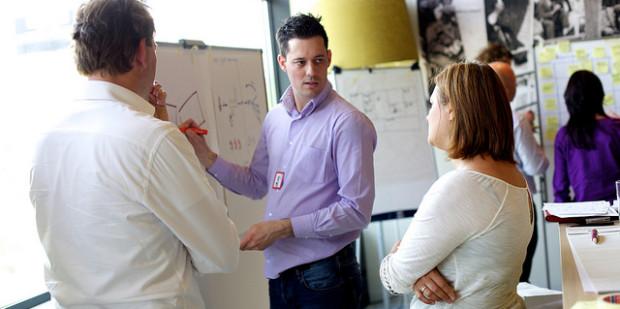Can You Save Money on Insurance Costs by Building with Steel?

Natural disasters are impossible to predict, and we constantly have to deal with the aftermath. The Internal Displacement Monitoring Centre estimated that 220,000 people in the U.S. were displaced or removed from their homes due to natural disasters in 2013. It’s a startling fact when you put it in global terms; 22 million people lost their homes due to flooding, hurricanes, drought, and tornados – and the IDMC estimates that’s three times more than war.
How do people protect themselves financially against disasters of this magnitude? One of the most common ways is insurance.
You might wonder as a first time builder, “How do I protect myself and my investments against something so unpredictable?”  Steel buildings are one of the the best construction materials to stand up to Mother Nature. We’ve discussed the extensive benefits of Armstrong Steel Building systems in our past blogs. Steel buildings are more durable and cost less than traditional construction, offer numerous design options, expand and assemble quickly, and can be engineered to span long distances with no interior support beams. Convinced yet? Well, there are more benefits to consider. But one significant, and lesser-known advantage to steel buildings, that’s usually an afterthought, is the possible savings on insurance.
Steel buildings are one of the the best construction materials to stand up to Mother Nature. We’ve discussed the extensive benefits of Armstrong Steel Building systems in our past blogs. Steel buildings are more durable and cost less than traditional construction, offer numerous design options, expand and assemble quickly, and can be engineered to span long distances with no interior support beams. Convinced yet? Well, there are more benefits to consider. But one significant, and lesser-known advantage to steel buildings, that’s usually an afterthought, is the possible savings on insurance.
Insurance companies acknowledge the durability and lifespan of steel buildings and many times, offer customers savings and rebates. Think about the decisions you make in the buying process. If you factor insurance costs into the equation, choosing a building just got easier.
Why do people need building insurance? If your building is financed, your lender is going to require it. Most basic insurance policies are in place to protect a building from the elements, fire, flood and even vandalism. Mother Nature, however, has proven herself to be quite powerful on many occasions, and sometimes even destructive.
 Insurance premiums on pre-engineered steel buildings also depend on the typical weather conditions of a specific area. Cities on the East Coast might have more flood or hurricanes and necessitate more coverage of that type, while Californian cities falling along the San Andreas Fault Line are susceptible to earthquakes. These two geographic areas require different coverage. It’s important to insurers that these buildings are engineered to withstand these types of conditions. The less likely a building will need structural repair after a storm hits, the lower insurance rates will be.
Insurance premiums on pre-engineered steel buildings also depend on the typical weather conditions of a specific area. Cities on the East Coast might have more flood or hurricanes and necessitate more coverage of that type, while Californian cities falling along the San Andreas Fault Line are susceptible to earthquakes. These two geographic areas require different coverage. It’s important to insurers that these buildings are engineered to withstand these types of conditions. The less likely a building will need structural repair after a storm hits, the lower insurance rates will be.
Steel buildings are also extremely resistant to fire, and insurance companies also recognize that advantage. According to the Metal Building Manufacturers Association, insurers follow a building rating system for fire resistance. The more fire resistant a building is, the more cost effective it is to insure. To determine a fire insurance rate, a building is first classified according to its construction. Those classifications, which the MBMA says could include variations, range on a scale from class 1-6, depending on the building components, and how they respond to fire. Class 1 buildings are considered the ‘most combustible’ while class 6 buildings fall into the ‘least combustible’ category.
Steel buildings usually fall in the noncombustible category, which is class 3. However, you can work with an Armstrong Steel in-house Project Manager to make the building more fire resistant with internal protection like a sprinkler or fire detection system, and those types of actions could have an effect on your insurance rates, as well.
Insurance premiums and cost savings will vary from one building to the next depending on several factors, like building function and its setting. Make sure to speak with your insurance provider if there are any special or extra circumstances you’ll need to plan around if you live in a potential disaster zone.
Photo courtesy:
« What Do All Growing Churches Have in Common?
How Paying Rent is Holding Back Your Business Growth »
Popular Posts

Log on to your Apple computer, buy a pair of shoes from Zappos, order the Asian Chicken salad from Chilis and you’re immediately exposed to the corporate culture of these companies. Corporate culture used to be thought of as a touchy feely component of business, less important than strategy. Now-a-days, more and more companies are… …

For the most part, steel buildings aren’t at risk of failing because of a single or even multiple snow events; however, snow accumulation in excess of the intended building design could lead to structural failure or collapse if basic preventative measures are not taken. Keep in mind: all properly built roofs are intended to withstand… …

